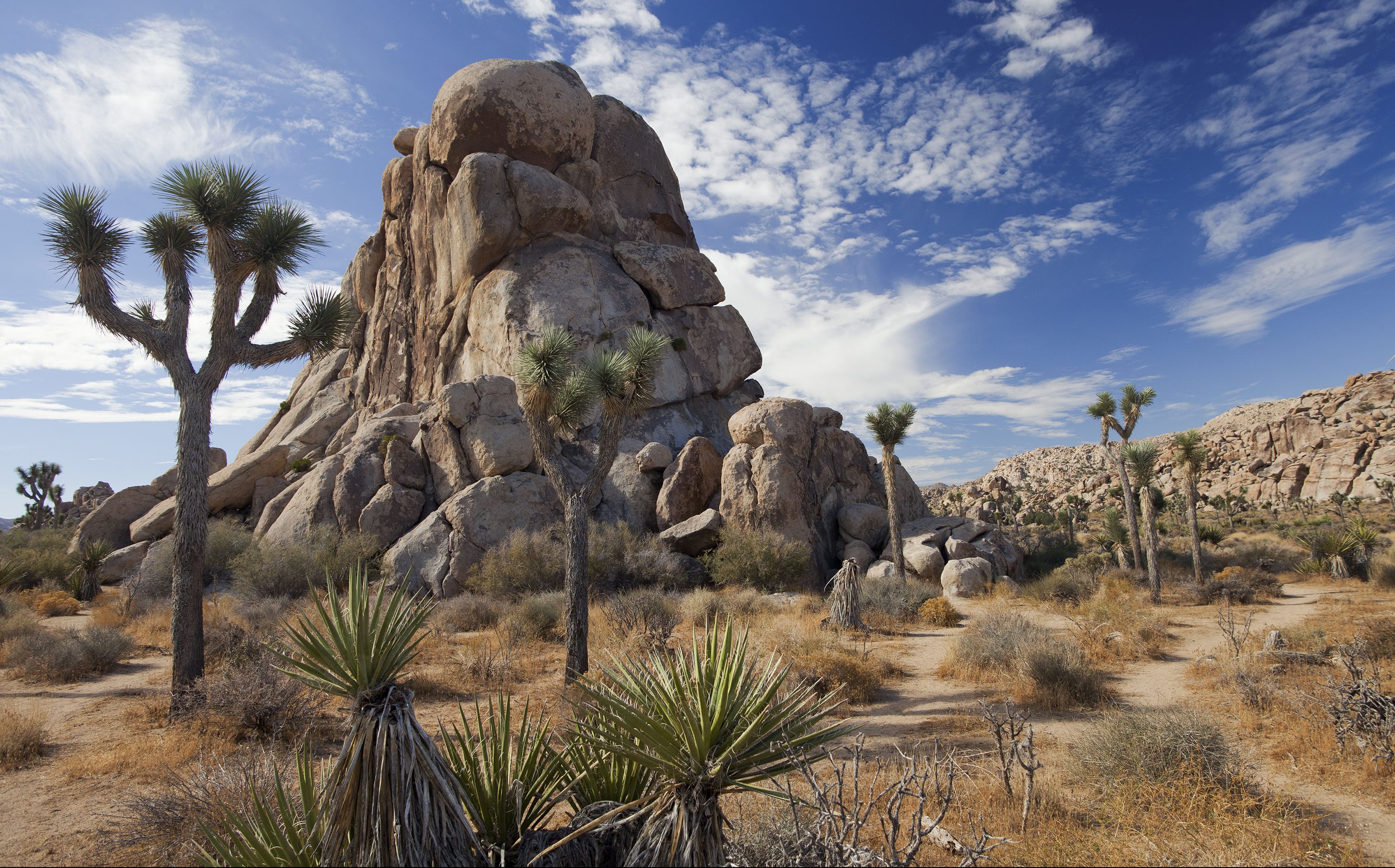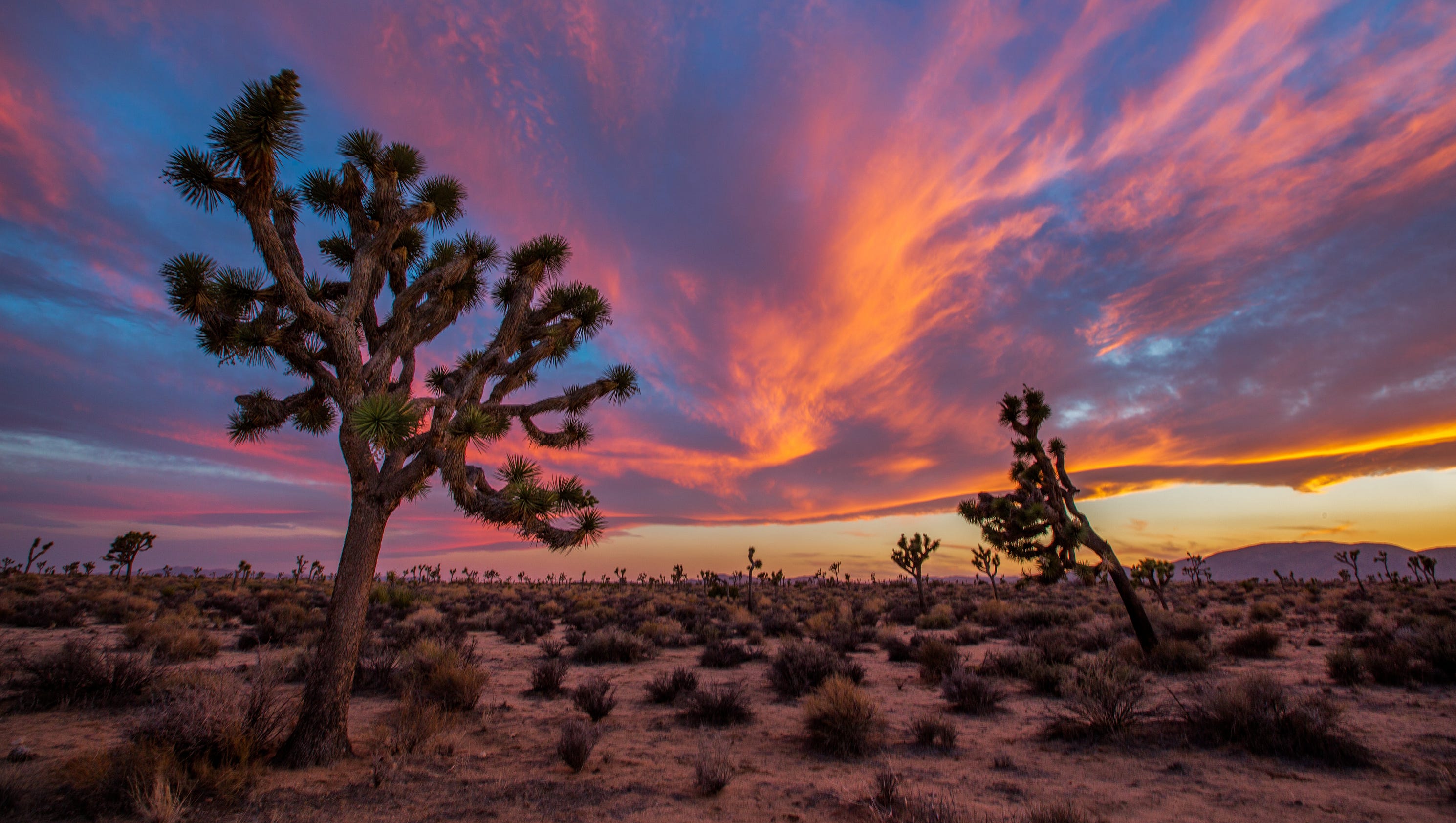
Joshua Tree National Park.
Even with major efforts to reduce greenhouse gases, 80% of the trees’ habitat will be whittled away by the end of the century
(August 10, 2019) — Joshua trees have dotted the Mojave desert for 2.5m years, but even if humans take urgent action to combat the climate crisis, their decimation is all but ensured by the end of this century, a study has found.
Only .02% of the tree’s current habitat in Joshua Tree national park would remain viable amid unmitigated climate change, according to research published in the journal Ecosphere. Even in a best-case scenario, with major efforts to reduce greenhouse gases, 80% of the trees’ habitat will be whittled away.
“Over the past couple of millions of years, we’ve had multiple ice ages with warming periods in between, and the Joshua trees have survived that,” said the ecologist Cameron Barrows, who co-authored the study. “But right now the warming is happening so quickly – and it’s getting hotter than any of those previous periods.”
Trees in cooler, higher elevation areas of the park are still thriving and multiplying, but those in hotter areas are producing fewer saplings. Although these desert dwellers require much less water than most plants, the most recent year-long drought in California left the ground too desiccated to support many young trees, the researchers said.
Eventually, most of the park will become too hot and dry for the Joshua trees. The predictions, based on climate change data from the UN’s Intergovernmental Panel on Climate Change and other global-scale models, forecast that summers in the national park would be an average of three degrees celsius hotter, in the best case, and five degrees hotter in the worst case.
“It makes me angry, and I do get tired and burned out,” said Rand Abbot, a Joshua Tree resident and park volunteer. “I don’t want this beautiful area to end up looking like something out of Mad Max.”
Right now, “the landscape looks like it came out of a Dr Seuss book”, said Barrows. “Joshua trees look like a fantasy.” They’re also a keystone species that provide food and shelter for other plants and animals – once they’re gone, much of the desert ecosystem would disappear as well, he noted.
Even if the trees manage to ride out warming temperatures, they face additional threats from smog and wildfires. “The national park is right on a path for the smog from LA to go east into the desert,” Barrows said. Nitrogen dioxide from polluted air has acted as a fertilizer, encouraging the growth of non-native grasses across the desert, which have fueled unprecedented wildfires.
In recent years, crews have been working to cut down the invasive grasses, but in the dry, desert environment, “just one lightning strike can wipe out acres,” Barrows noted. “And very few Joshua trees tend to survive wildfires.”
The study didn’t evaluate how Joshua trees outside the national park, including ones that grow in parts of Nevada and Arizona, will fare. “It’s possible they’ll have a better future there,” Barrows said.
A 2011 study predicted that while global heating would wipe out most of the Joshua trees in California, some could survive in the northern-most areas of their natural range. It is unclear if that forecast will change in light of more recent climate data indicating a hotter future than scientists previously expected.
Overall, the latest report “is extremely discouraging”, said Kenji Haroutunian of the volunteer group Friends Of Joshua Tree. “But at the same time – I don’t see it as a case where we might as well give up.”
Record numbers of people have been visiting Joshua Tree national park – more than the park’s staff have been able to handle in recent months, especially during the most recent government shutdown when wayward visitors caused irreparable damage.
“Yes, the park is underfunded, and threatened by overuse – but at the end of the day getting more visitors to come and see what an amazing place it is maybe the key to saving it,” said Haroutunian, who’s been frequenting the national park since the mid-1980 and leads groups of visitors on rock climbing trips.
He wants to encourage more people to come and experience the landscape – perhaps before it’s too late.
“It’s just a fascinating place. You know, a few years ago, literally every Joshua tree in the park bloomed at the same time,” he said. “In my mind, it was like the trees were fighting back. Like, ‘Alright everyone, let’s go.’”

Posted in accordance with Title 17, Section 107, US Code, for noncommercial, educational purposes.